MedievalReporter.com
Covering history's most marvelous millennium
Join our newsletter!

Covering history's most marvelous millennium
Covering history's most marvelous millennium
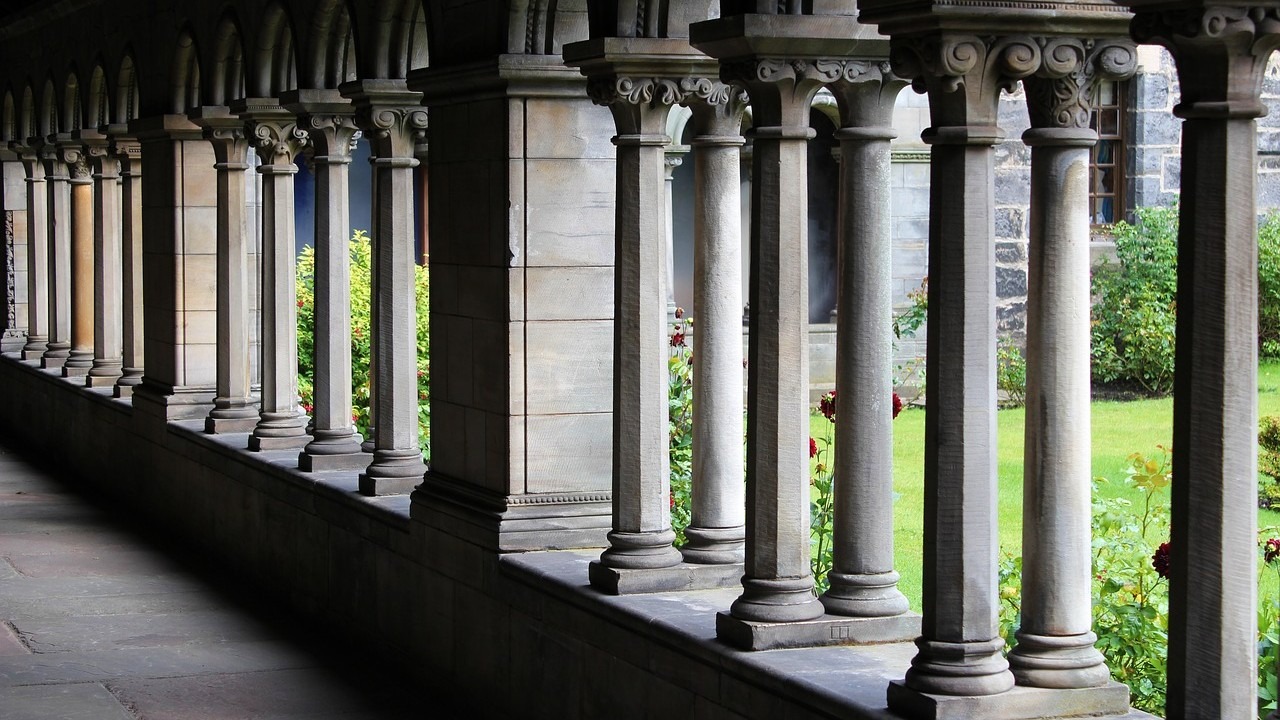
As the Middle Ages progressed, most European societies became ever more divided into three different orders, called estates. The first estate was the order of the oratores, meaning “those who pray” – in other words, the clergy. Through their teachings, Catholicism came to encompass practically all aspects of life in Western Eurasia. But neither the faith nor the Church were doctrinal monoliths; if anything, the history of medieval Catholicism was one of constant strife and evolution.
This is the first installment in our Three Estates saga, covering the oratores. More interested in kings and knights? Then check out our second episode:
Are you interested in the common folk instead? Take a look at our third episode:
The early christian Church was an amalgamation of different doctrines and rites. But the organization was quite structured, whereby worshippers were organized into parishes – the basic unit of Christianity. Multiple parishes made up a bishopric. In the West, bishops were led by the bishop of Rome, better known as the pope (stemming from the Latin papa, or “father”), and in the East by the patriarch of Constantinople, the etymological root of which refers to a paternal figure amongst christians.
These early christian leaders were keen on standardizing as much as possible, with a special emphasis on doctrine. This led to the first ecumenical council (a convention of all christian leaders): the First Council of Nicaea, in 325 CE. While meant to eliminate the heresy of Arianism (started by one Arius of Alexandria, who preached that Jesus Christ was not a divine being, and that gained significant popularity with the Goths), the council also concerned itself with defining central dogmas of Christianity, such as whether Jesus was the son of God, and whether he was divine himself as well – an ambiguity that would lead to centuries of theological debate.
Catholicism started as the prevailing branch of Western Christianity. As the power of Roman emperors waned in the Western Empire, the pope gradually overtook the social leadership role that emperors previously held, organizing bishoprics that roughly corresponded with Roman provinces, and sending evangelizing missions within and beyond the borders of the (former) Empire. The success of these missions is perhaps best embodied by the conversion of Frankish king Clovis I in 496, setting a major precedent on how rulers and the Church would interact throughout the Middle Ages – later ratified by Charlemagne.
This process was not repeated in the East, for the Byzantine emperors still held considerable sway over their realm, enabling them to remain politically above the patriarchs of Constantinople, and socially parallel to them at worst – a minor, but not a radical seed of trouble for the Byzantines.
The main aim of the early Church was to convert as many people as possible to its version of Christianity; the Greek word “catholic” means “universal.” Time was of the essence, for early medieval theologians argued that the end of times was always nigh. From this objective derived the main function of the ecclesiastical order of society: to pray for the salvation of those converted – hence the name oratores, or “those who pray [for something].”

– advertisement –
– article continues below –
As the Catholic Church matured in the 6th century, a parallel segment of christian society sprouted. While believers sought salvation through prayer, and the clergy prayed further on their behalf for a blissful afterlife, there were some who sought communion with God through purity on Earth, refuging themselves in a life of isolation, prayer and asceticism, much in the way Jesus did for forty days in the desert. Although some of these communities had come up in Roman times, this ideal was defined by Benedict of Nursia in the 520s, a priest and later saint who founded a dozen of these communities throughout Italy.
This was the birth of monasticism, from the Greek word monachos. Although the Greek root itself refers to being “alone”, the idea was to isolate oneself from the rest of society in order to seek spiritual purity. Early monasteries were spearheaded by priests called abbots – again meaning father, although coming from a Syriac word – but were otherwise composed of mostly laymen who saw each other as brethren.
Women organized similar communities known as convents. Headed by abbesses, these women held authority above the residing priests who officiated mass for them and had considerable sway over society at large. In a noteworthy case in early 8th century England, the abbey of Hartlepool housed both monks and nuns, and it was headed by a literate abbess of the name Oftfa; her presence and role suggest that a monastic school had existed there for a time. By the High Middle Ages, certain convents, such as the abbey of Notre Dame aux Nonnains (Our Lady of the Nuns) in France were so powerful and influential that the bishops of the nearby city of Troyes were bound to pay homage to the abbess, providing her with an expensive palfrey as a gift, and surrendering public honors that made it clear to the community who was in charge.
Catholic monasticism was determined by a strict set of rules first set by St. Benedict; people who chose this lifetime were thus called the “regular” clergy (from the Latin regula, the noun “rule”). While not followed by all monasteries, a way to think of it is that the Benedictine rule was the gold standard of monasticism. Under it, monks were to live an ascetic life, and took vows of chastity, poverty (meaning they couldn’t accumulate wealth themselves) and obedience to their abbots.
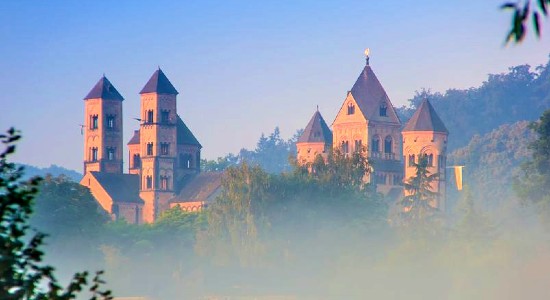
Most importantly, though, they couldn’t freely move, nor abandon their monasteries. Monastic routine had monks farm the lands of the monasteries, and generally perform all kinds of house chores: working, eating, and sleeping communally within the walls of their monastery. The lives of monks were regimented to the hour: in fact, timekeeping in the Middle Ages derived from the times of the day that monks would gather to pray.
Because of their admirable pursuit of spiritual purity, it wasn’t uncommon for the younger children of powerful lords to be essentially given away to monasteries, alongside significant land grants and charters of privileges; over generations, some monasteries amassed immense wealth. This practice would carry on in the 12th and 13th centuries as knightly orders took in newer members, and the noble children usually rose to be abbots or leaders within their monasteries.
Initially, it was the Church that founded monasteries, from which evangelizing and monastic missions sprouted throughout Europe. Particularly successful were the missions to Ireland, where monasteries were founded through the 6th century. Irish monks produced and kept excellent annals, narratively stiff records of a variety of events, from the births and deaths of kings to catastrophes like the dooming crop failures from 536 to 539 CE.
It was from these monasteries whence in the 6th and 7th centuries evangelizing voyages took off to Great Britain, to convert the Picts in the north, and the Anglo-Saxons in the south: many monks were elevated to martyrdom in the process, because in monasteries they were taught to promote a message of love and non-violence which they took to heart quite profoundly. Eventually, this yielded results: starting in 616, Anglo-Saxon kings began converting to Catholicism.

Their subjects followed the kings but only gradually; in the late 7th century, Theodore, archbishop of Canterbury, wrote penitentials (books meant to instruct priests on the penitence to be dispensed after confession) addressing those who, while converted, still engaged in pagan rituals. There is evidence that some smaller communities in southern England had adopted the christian faith as early as the late 5th century, indicated by their burials. The bodies were wrapped in white cloth with pieces of quartz, and arranged with the head to the west and the feet to the east, in anticipation of the second coming of Christ. However, it does not seem that they preached the gospel outside of these spheres.
Because Christianity is a religion based on scripture, it was necessary to have a literate clergy. In the west, Latin became the official language of the Church, and as early as the year 382 CE the Bible was available in vulgar Latin for the common man to understand. Monasteries proved the ideal environment to facilitate and promote literacy, as resources generally abounded. And, because ordained monks weren’t meant to work the land, they were thus free to write and preserve books. Most primary sources in early medieval Europe north of Italy and Spain were produced in monasteries. Many monasteries housed schools that taught Latin, and sometimes Greek; their model would later be co-opted by cathedrals, which were better equipped and assisted in the expansion of literacy in urban environments.
In fact, the division of society into three orders comes from texts written in 9th-century monasteries, as there was an obsession with defining and explaining the world as God had arranged it. The original idea was that, because God was above all, no one on earth could be above anyone else, and thus the relationships between the three orders of society were not understood in terms of power (in theory at least) but rather of symbiosis.
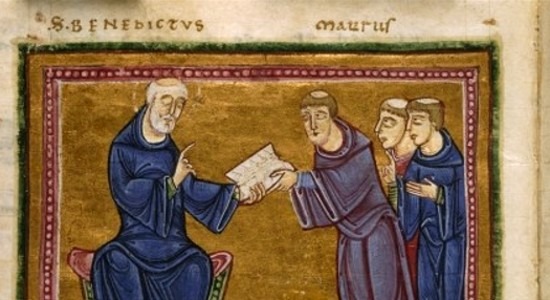
From its inception, the Catholic clergy was meant to be inserted in society, sometimes alongside non-religious structures and institutions, and sometimes intertwined with them. For this reason, this larger subdivision of the clergy was called “secular”, as in contrast to the “regular” monks, secular clergymen were embedded in the everyday affairs of people, meddled in politics, and acted as leaders of their local communities.
Medieval communities had organically converged into villages, which were the core of a lord’s manor(s). Within these villages, one or more churches acted as the spiritual foci for believers. They were called parish churches and were the smallest administrative division of the Catholic Church. They could be created by institutional necessity, or by particularly influential magnates, bishops, or monasteries, which would provide endowments of land. Conversely, these patrons would expect that part of the revenue that these churches received, whether in kind, cash or service, came back to them. The aggregation of parish churches constituted a diocese, led by a bishop who had his seat – or cathedra from the Greek “throne”, and from whence comes the world cathedral – at an important city.
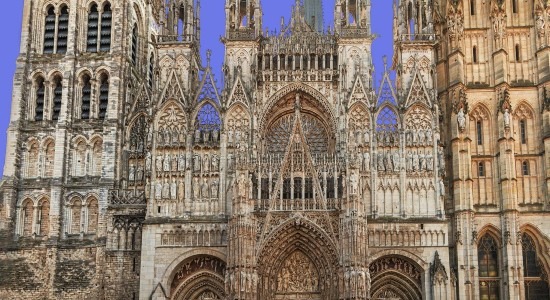
These churches were led by priests, who even as late as the 12th century were not completely literate in Latin. While priests received education in the conduction of mass, theological matters, and some canon law at canonical or monastic schools, records indicate that the average parish priest most likely learned his trade in a manner similar to a craftsman’s apprenticeship, by learning through observation and execution. Promising priests would continue their formal education in cathedral schools, and later in a new type of academic organization: the university. Famously, the University of Bologna, Italy, was founded around the year 1180, albeit initially the concept of a university rather referred to the way that academics banded together instead of the level of education they ultimately provided.
A priest’s lifestyle varied widely. While in theory they were meant to live simple lives, in practice they could get away with many things, varying from community to community. In the 11th and 12th centuries, canons explicitly remarked that priests were to spiritually lead their communities through example, suggesting that the average village priest’s behavior usually gave foot to immoral rumors regarding their ignominious conduct. Accountability was a difficult task, so bishops would delegate some functions to assistants called vicars, who traveled from one church to the next to enforce discipline on priests if needed.
A major concern of bishops was priestly marriage and concubinage. Not unusual prior to the 11th century, marriage was forbidden by two Church councils in the 12th century. While a doctrinal and moral case was made against it, it was mostly to prevent priests from passing on their parishes to their children. Concubinage was not as serious of an issue but still condemned by puritans within the Church, as it was seen as a pure expression of priest’s lust.
Mass would be conducted daily and in Latin. Preaching in the more modern sense, and conducted in the vernacular, regained prominence in the 13th century. A priest’s main function was to perform sacraments, chief among them eucharist and confession, to teach his congregation all relevant prayers, and to instill in them a genuine sense of faith, which based on the texts left behind by priests and bishops alike, was a difficult task.
Well-educated priests generally shied away from holding mass, and rather worked as instructors, educators for lay folk, and – perhaps most importantly for secular society – bureaucrats. Charlemagne had famously started the missi dominici system, whereby trained priests would travel around the Carolingian empire proclaiming the emperor’s laws, hearing and addressing the grievances of said laws, and keeping records. Later, any self-respecting lord would keep in his retinue one such priest, the chaplain, who would also keep his seal; the word “clerk” today shares its etymological root with the word “cleric”, denoting their unified origin. Powerful lords would also seek to make their castle‘s chapel to be the local parish church, as a sign of power, and piety, of course.
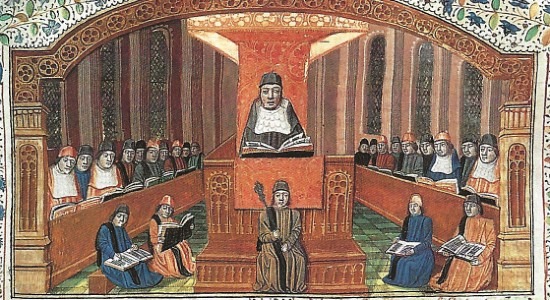
– advertisement –
– article continues below –
Above all else, the role of the oratores was praying on behalf of believers, for them to stay in purgatory for as short as possible. Medieval faith was different from our current understanding of it, in that it was literally universal: impossible to opt out of. Renouncing the Catholic faith – or Orthodox, or Muslim, for that matter – was apostasy, one of the worst sins one may commit, and may very easily afford the infidel the death penalty, a practice that persists to this day in many countries.
It is difficult to ascertain, however, how pious people were, as most records from the Middle Ages dealing with concrete matters of faith were written by devout clergymen themselves, whether addressing heresy or condemning the mixing of folk traditions and faith.
What we do know for certain is how the Church permeated secular life. Most importantly, there was the issue of time. The Carolingians first began the practice of keeping time to determine Christ’s birth date, which was incorrectly calculated several years after his now commonly accepted birth date (6-4 BCE). Previously, Catholic communities had chronicled time based on the years since Creation – the Byzantines carried on this method for many centuries thereafter. The Catholic Church was primarily worried about keeping good track of Easter, and other holy days, which marked either important biblical events (such as the Virgin Mary’s visit to her cousin Isabel, who mothered Saint John the Baptist) or the feasts of saints themselves.
Practically every town and village in high medieval Europe was devoted to one or more saints, as Roman times and the Early Middle Ages had produced a plethora of saints and martyrs to hold in high regard by people depending on their locale (such as Saint-Denis on the outskirts of Paris), or their trade (such as Saint Peter, patron saint of fishermen). Their feast days were thoroughly observed, with little to no labor to be performed on their holy days – hence the modern contraction “holiday”. Additionally, folk practices and celebrations were held that were as diverse as the catalog of saints. Furthermore, towns and villages were named after the saint to which the local church was consecrated; both these customs are still held today across Catholic-majority countries across the world. It is crucial to note that the Catholic Church emphasized that believers shouldn’t pray to saints, but rather ask for saints, as Catholic role models, to pray on the believer’s behalf to God.
Perhaps the most infamous nexus between secular society and the oratores is the claim that wealthy people could just buy indulgences (special dispensations to reduce the time one would spend in purgatory) to go to heaven as quickly as possible after death. The truth here is a little bit ambiguous. Following Charlemagne’s example, kings and nobles were keen on endowing churches and monasteries with land and cash for the glory of God, as well as funding evangelizing missions. Starting in the 10th century, the dukes of Normandy, for instance, poured fortunes into the construction of churches and cathedrals, and by the late 11th century, a new architectural style began to emerge, later given the pejorative nickname “gothic”, many of which still stand today. Following the lead of king Saint Stephen I, Hungarian kings later financed the evangelizing missions of German and Czech priests.
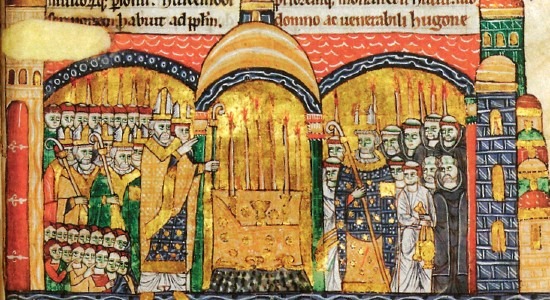
This paints a clear picture that medieval rulers were interested in their spiritual well-being, both in this life and the next. But it may also address the fact that ecclesiastical recognition of a king acted as a validation of the sovereign, entitling them to no earthly accountability, and any challenge to their authority could be met with deadly force. When asked to bow before German emperor Henry IV, Richard the Lionheart (my favorite English king) is claimed to have famously said “I am born in a rank which recognizes no superior but God, to whom alone I am responsible for my actions.” The notion that only God was above kings went so far that the High Middle Ages saw French kings essentially kidnap the Papacy, and use it as a political chess piece.
With regards to political offenses, the Church was far more concerned with simony and nepotism. Simony referred to the practice of outright buying a good position within the Church. These positions of power were not blatantly put up to sale, but cunning lords would make deals under the table to ensure that their children were guaranteed a good seat next to a bishop, or better yet, as a cardinal or abbess at an important convent. It was a particularly common occurrence in the Italian city-states, where by the Late Middle Ages powerful families vied for the control of the Papacy and the College of Cardinals in squabbles that make modern political drama series look like children’s games. Nepotism came tied to simony; if a family member was thrust into a position of power, he could then easily accommodate other nephews, cousins or sons from within. The Church fought actively against these two endemic problems for centuries, but ultimately they proved too ubiquitous, and were causing factors of the Protestant Reformation.
– advertisement –
Comments are closed.
Great post. Thanks and best of luck.
Thanks so much, Strassell. You too!